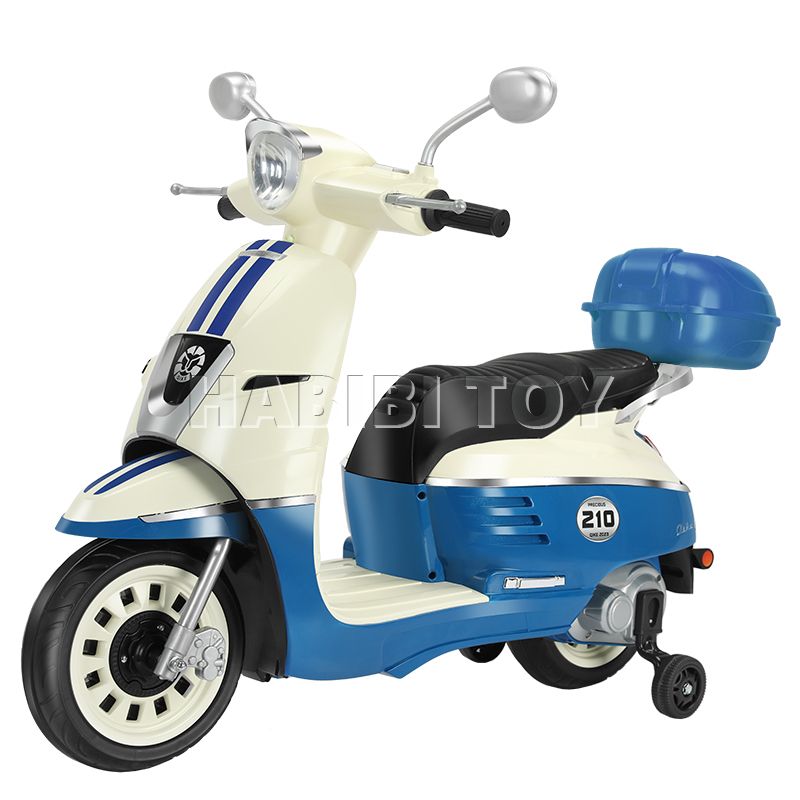Are Ride-On Toys Safe for Babies & Toddlers?
Few toys elicit as much joy and excitement as ride-on toy cars, trikes, or scooters, making them a timeless childhood favorite. But are they truly worth the investment? In this comprehensive guide to ride-ons, we provide expert advice and top tips to help you determine if your young driver is ready for their first set of wheels!
Are Ride-On Toys Worth It?
Absolutely! Ride-on toys offer numerous benefits beyond simple entertainment. Cars, trikes, and scooters contribute significantly to a child's physical, cognitive, and social development. They enhance gross motor skills as children learn to propel themselves forward, steer, and maintain balance. These toys also foster imaginative play, stimulating creative thinking and imagination. Moreover, they aid in the development of interpersonal skills such as cooperation and communication when children engage in play with others.
Are Ride-On Toys Beneficial for Development?
Ride-on toys serve as powerful developmental tools for young minds, enhancing various aspects of children's growth and learning, including muscle strength, balance, coordination, spatial awareness, problem-solving skills, imagination, and social intelligence.
Let's explore further:
1. Gross Motor Skills: Steering and maneuvering a ride-on car or other wheeled toy strengthens a child's muscles, balance, and coordination, laying the groundwork for overall physical development.
2. Cognitive Development: Navigating obstacles while riding fosters decision-making skills and improves understanding of cause and effect in real-time situations.
3. Social Interaction: Engaging in friendly races, outdoor adventures, and collaborative role-play activities encourages sharing, turn-taking, and communication with peers.
4. Confidence: Riding a toy vehicle provides children with a sense of freedom and independence, boosting their self-assurance as they learn to navigate and control their ride.
5. Screen-Free Play: Ride-on toys encourage children to disconnect from screens and enjoy outdoor play, promoting fresh air and unplugged entertainment.
Further reading:Top Kids' Bocce Ball Sets: Fun, Safety, and Skill Building!
Top Picks for Kids' Sports Bowling Set (White)
Choosing the Right Tricycle for Your Child's Age
Are Ride-On Toys Safe for Babies & Toddlers?
Safety is paramount when selecting ride-on toys for babies and toddlers. Parents need assurance that these toys provide the necessary support and stability for their child's balance and coordination development. While bumps and scrapes may occur, adhering to safety guidelines can minimize risks. Here are key safety considerations when choosing your child's first ride-on toy:
1. Age Appropriateness: Ensure the ride-on is designed specifically for your child's age group to meet developmental needs and safety standards.
2. Durability: Select toys crafted from sturdy, long-lasting materials with rounded edges to prevent injuries from sharp edges or corners.
3. Stability: Opt for ride-ons that offer stability and prevent tipping over, particularly for young children. Models with four or three wheels provide added support.
4. Safety Standards: Prioritize toys that comply with established toy safety regulations to ensure they meet quality and safety requirements.
When is the Right Time to Introduce a Ride-On Toy?
The optimal time to introduce a ride-on toy varies depending on the child's developmental stage. Many trikes are suitable for babies and young toddlers aged 12 months and older, provided they feature supportive elements like an easy-grip handlebar and three or four wheels. As children grow, typically around the age of 3 and up, they can progress to more advanced ride-ons such as scooters and balance bikes.
Here are some tips for choosing a ride-on toy bike for children:
Age: The child should be able to pull themselves up and stand on their own, and have a developed spine. The ideal age to introduce a ride-on toy depends on the child's developmental stage.
Durability: The ride-on toy bike should be made from strong, long-lasting materials, and have rounded edges to prevent injuries.
Stability: The bike should be sturdy and stable to prevent tipping. For young children, four or three-wheeled ride-on toys are ideal for extra support.
Safety standards: The ride-on should conform to toy safety regulations.
Weight: The bike should weigh no more than 30% of the child's weight. For example, if a child weighs 15 kg, their bike should weigh no more than 4.5 kg. A slightly lighter bike will offer better performance.
Speed: A ride-on toy that moves too quickly can be overwhelming and potentially unsafe, while one that trudges along too slowly might bore a more adventurous toddler.
- Previous: None
- Next: None
- 0


